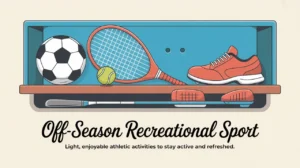Jim’s Intro to Body Maintenance
Hi folks, Jim here, the only commentator who once tried to touch his toes during warmup and nearly pulled a hamstring.
What is body maintenance?
Body maintenance is the regular care and attention players give their bodies to stay healthy, mobile, and resilient throughout a season. It includes stretching, mobility work, strength upkeep, soft tissue care, and addressing minor issues before they become major problems.
How does it work?
Body maintenance works through consistency and attention to detail:
- Mobility Work: Keeps joints moving freely to support skating mechanics and balance.
- Stretching and Flexibility: Reduces stiffness, improves range of motion, and prevents injury.
- Soft Tissue Care: Foam rolling, massage balls, and light self-massage target tight spots.
- Prehab Exercises: Strengthening stabilizing muscles prevents future injuries.
- Daily Check-Ins: Identifying aches or limitations early allows for quick adjustments before they worsen.
How do you make good decisions with it?
- Build a Routine: Set aside time daily for light mobility or stretching.
- Listen to Signals: Don’t ignore soreness or tightness. Address it early.
- Target Key Areas: Focus on hips, groin, hamstrings, shoulders, and back, which are hockey’s high-stress zones.
- Use the Right Tools: Foam rollers, bands, and lacrosse balls can go a long way.
- Stay Consistent: Occasional work won’t cut it. Daily habits make the difference.
How do you master it?
Mastering body maintenance means treating it like a vital part of training, not an optional extra. Over time, players who prioritize maintenance move better, recover faster, and stay healthier.
What does it look like when done right?
Good body maintenance looks smooth and controlled. Players warm up fluidly, move without stiffness, and handle long seasons with fewer nagging injuries.
Commentator’s Corner
Jim’s Take
Body maintenance is like taping your stick before every game. It’s routine, maybe a little boring, but absolutely essential if you want to perform.
Parent Tip
Encourage players to do a quick post-practice stretch or foam roll. Daily habits keep bigger problems at bay.
Player Tip
Own your routine. Know which parts of your body need the most attention and stay ahead of them.
A Final Thought
Body maintenance keeps players skating strong long after others start to break down. Master it, and your body will reward you with durability, consistency, and confidence on the ice.









